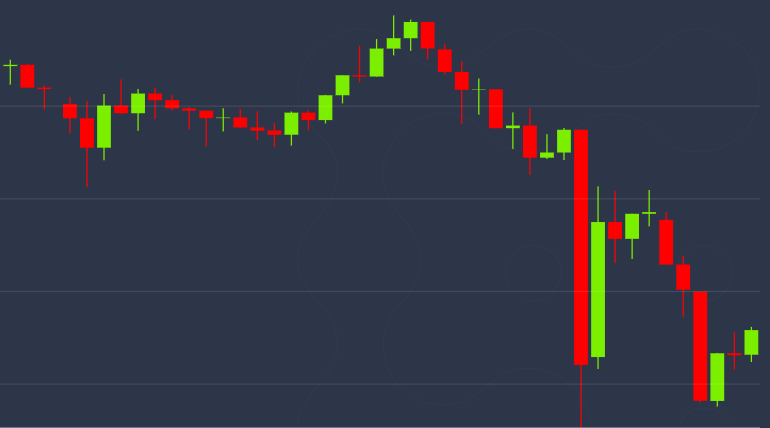Crypto Futures and Institutional Interest: Looking in the Wrong Place

Noelle Acheson is a veteran of company analysis and member of CoinDesk’s product team.
The following article originally appeared in Institutional Crypto by CoinDesk, a newsletter for the institutional market, with news and views on crypto infrastructure delivered every Tuesday. Sign up here.
Last week, the Cboe let its traders know that it would not be renewing its futures contracts on bitcoin.
This was taken by many as a sign that expectations of institutional interest in crypto assets were misplaced, and by some as a nail in the crypto coffin.
If a significant venue like the Cboe doesn’t see a future in offering a product that institutional investors allegedly require, then obviously there’s no demand, right? And if the institutions don’t bring their money and legitimacy into the market, where is the much-needed liquidity going to come from?
As usual, the reactions are overblown. The news is neither significant nor bad for the sector’s outlook. It does, however, shine a light on the recurring role of misplaced expectations in driving market narratives.
Natural selection
Cboe was the first traditional institution to offer bitcoin futures, launched in December 2017. It was followed a week later by a similar product from the CME. In the end, although volumes have been declining at both, institutional traders seemed to prefer the CME’s product. Let’s look at why.
First, the CME is larger than the Cboe Futures Exchange, and in commoditized markets, size matters. Brokers would logically prefer to trade on a platform where they already have connectivity.
Second, settlement methods are important, since they determine a position’s profitability.
Cboe used the Gemini auction price to determine the value of its contracts – a price determined once a day on thin volume. The CME relied on an index comprised of data from a handful of liquid exchanges. Although the reliability of this pricing method has also been questioned, it seems that institutional traders saw the index as the less manipulable of the two options.
The suspension of one particular type of bitcoin futures contract usually says more about product structure than the underlying commodity and is far from an isolated incident.
By some estimates, more than half of futures launches fail to reach critical mass, and simply fade away.
No big deal
The withdrawal of this product is unlikely to make a noticeable impact on trading strategies. Volumes were low, and since the CME has stated its intention to continue offering its version, those that used the Cboe can relatively easily switch to the more liquid contract.
What’s more, the utility of cash-settled derivatives to hedge bitcoin positions is a contentious point. Many claim that what the market needs is regulated physically-settled bitcoin futures. These will supposedly make the market more robust by providing a more reliable and less manipulable hedge.
With cash-settled futures, the value of the product depends on market information, which – in a relatively illiquid market – can be manipulated. With physically-settled futures, you take delivery of the underlying bitcoin. You can then hold on to the asset, or sell it in the market at a “real” price.
The eventual launch of Bakkt and ErisX, which plan to offer physically-settled bitcoin futures, will bring an alternative product into the institutional toolbox.
But those that expect physically-delivered futures to be the trigger that brings institutional players into the market in volume are likely to be as disappointed as those that expected cash-delivered futures to perform that feat.
Looking for signs
That is the main takeaway from this news: that there is no “key” to institutional involvement. And no matter how many of us agree that we have identified the missing piece, we will be wrong.
The narrative that institutions would get involved has been constant – the supposed trigger, however, has swung from derivative products to custody solutions to regulation (and I might be missing a few steps in there), and will no doubt pivot to something else as legal clarity continues to emerge without a corresponding price bump.
In looking for something simple to grasp and monitor, we are trying to fit the birth of a new asset class into a convenient linear progression. We are trying to fit a five-dimensional concept into a unidimensional construct – and, yes, it is as impossible as it sounds.
Identifying narratives is a necessary step, though, that enables us to separate signal from noise, and to shape investment theses and production decisions.
The narrative that institutions are interested in crypto assets is a sound one. Many are already investing in this market. Family offices and traditional hedge funds have been dipping their sizeable toes in for some time now, and we are even seeing old-school institutions such as pension funds and endowments starting to take this new asset class seriously.
Where we get it wrong is in expecting institutions to wait for a specific green light. In reality, they are waiting for a matrix of signals that does not conform to our linear way of thinking.
As even a cursory glance at CoinDesk’s headlines will reveal, the shift is happening, in both subtle and obvious ways. The technology is progressing, regulators are working hard to figure out the right strategy, and investors of all types are learning and experimenting.
This progress may seem slow, but it is steadily building the base for an acceleration. Thinking that we can predict when that will happen is ambitious.
To steal a phrase from Hemingway, the involvement of institutional investors in crypto assets will happen “gradually, then suddenly.” As almost all profound changes do.
John Tornatore, Cboe Global Markets, image via CoinDesk archives










